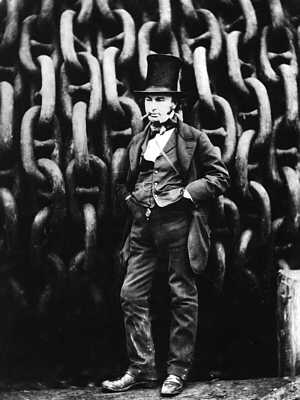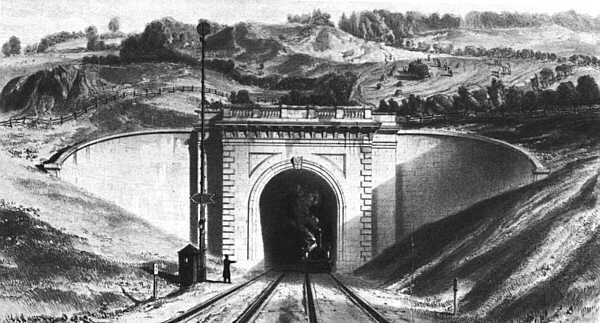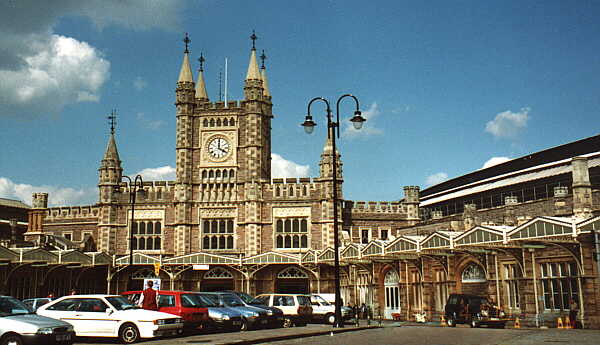

HomePage | Optical Illusions | War Stories | QBasic | Dads Navy Days | Bristol | Bristol, USA | Bristol, Canada | Terre Haute | Miscellany | Web Stuff | About Ray | Site Map | Site Search | Messages | Credits | Links | Web Rings
Bristol | Place Names | Legends, Pre-history and the Romans | Birth of the City | 1100 Onwards | Voyages | 1450 Onwards | 1650 Onwards | 1700 Onwards | Riots | The Blitz (Page 1), (Page 2) | The Castle (Page 1), (Page 2), (Page 3), (Page 4), (Page 5), (Page 6) | Blaise Castle (Page 1), (Page 2) | Castle Green (Page 1), (Page 2) | Union Street | Broadmead | The Old City (Page 1), (Page 2), (Page 3), (Page 4) | Christmas Steps (Page 1), (Page 2) | St. Mary Redcliffe (Page 1), (Page 2), (Page 3) | College Green (Page 1), (Page 2) | King Street (Page 1), (Page 2) | Clifton (Page 1), (Page 2) | Avon Gorge (Page 1), (Page 2), (Page 3) | Hotwells (Page 1), (Page 2) | City Docks (Page 1), (Page 2), (Page 3) | Bedminster (Page 1), (Page 2), (Page 3), (Page 4), (Page 5), (Page 6), (Page 7) | Old Market (Page 1), (Page 2) | St. George (Page 1), (Page 2) | Temple (Page 1), (Page 2), (Page 3) | Arno's Vale Cemetery (Page 1), (Page 2) | Brislington | @ Bristol | Oldest House | I. K. Brunel (Page 1), (Page 2) | Ma Pugsley | Yeamans | Boundaries (Page 1), (Page 2) | Photography | Exhibition (Page 1), (Page 2) | Lead Working | Historical Perspective | Virtute et Industrial | Other Sites | Bibliography (Page 1), (Page 2) | Help Wanted (Page 1), (Page 2), (Page 3)
Bristol - Isambard Kingdom Brunel (1806 - 1859)
Many great people have had associations with Bristol, but I don't think any has left such a physical mark on the city as the great engineer, Isambard Kingdom Brunel.

Isambard Kingdom Brunel
This famous photograph of Brunel, standing in front of the massive anchor chains of the SS Great Eastern, was taken at Millwall Docks, London in November 1857 by Robert Howlett. Brunel wrote on the back of the original "I asked Mr Lenox to stand with me, but he would not, so I alone am hung in chains."
Brunel was born at Portsea, near Portsmouth, on 9th April 1806. His mother was English and his father was the great French engineer Sir Marc Isambard Brunel. He was apprenticed with his father who was building a tunnel under the River Thames, which is still used today as part of the London Underground system. The tunnel was started in 1824 and Isambard soon became engineer in charge of the project, which practically bankrupted the backers and cost the lives of many of the tunnellers. During the second flooding of this tunnel Brunel was nearly killed and whilst recovering from this entered a competition to design a bridge across the gorge at Bristol. In fact, he submitted four designs for this competition.
Clifton Suspension Bridge
In 1754, a Bristol wine Merchant, William Vick, died leaving £1,000 towards a bridge that should be built across the Avon Gorge. The money was to be invested until it grew to £10,000, which he hoped would be enough to pay for it. In the early 19th century many new bridges were being built across the country, many by Thomas Telford. In 1829 a competition for the design of the bridge was announced and it was for this that Brunel entered. One design submitted involved building two 250 feet high piers from the river bed to carry the bridge. A design by Telford, who was actually a judge of the competition, won it but most people hated it and in 1831 it was dropped in favour of one of Brunel's designs. This was much more elaborate than the one that was eventually built, having sphinxes atop the piers and inscribed with hieroglyphics, a distinctly Egyptian look about the whole thing.
The bridge seemed to be fated, work started in 1831 but was soon halted until 1836 and there were several serious accidents. The company formed to build it went bankrupt and work stopped altogether in 1853. There were plans to demolish the towers but work was restarted in 1862, the bridge was eventually opened on 8th December 1864, using chains that came from another of Brunel's works, Hungerford Suspension Bridge in London, that was being demolished at the time. As with so many things the final cost of the project, £100,000, was far more than the initial estimate of £57,000. Brunel, unfortunately, did not live to see the completion of this wonderful bridge, he had died in 1859 aged just 53.

A nightview of Bristol Suspension Bridge
Great Western Railway
The Great Western Railway, which later, because of it's initials GWR, was nicknamed God's Wonderful Railway, was founded by a group of Bristol businessmen. On 21st January 1833 they issued a circular which read ...
"The Gentlemen deputed by the Corporation, the Society of Merchant Venturers, the Docks Company, and the Bristol and Gloucestershire Rail Road Company, to take into consideration the expediency of promoting the formation of a RAIL ROAD from BRISTOL to LONDON, request you to favour them, in writing, with such information as you may be able to afford, respecting the expediency of the proposed Rail Road, addressed to the Chairman, in time to be laid before an adjourned meeting of the said Deputies, to be held at the COUNCIL-HOUSE on Thursday, the 31st instant, at Twelve O'Clock.
I am, etc.,
John Cave, Chairman."
The rather grand sounding Bristol and Gloucester Rail Road Company owned a horse drawn tramroad that ran the 10 miles from the floating harbour to the colleries in Coal Pit Heath. The company was authorised in 1828 and opened in 1835. It eventually belonged to the Midland Railway, and it was because of this that the western terminus of the GWR, Temple Meads station, was jointly owned by the GWR and the Midland.
Brunel, along with three other engineers, was asked to submit competitive proposals to the committee. The man who submitted the lowest estimate was to be given the task of surveying the line. Brunel who was still only 27 wrote to them ...
"You are holding out a premium to the man who will make you the most flattering promises, and it is quite obvious that he who had the least reputation at stake, or the most to gain by temporary success, and least to lose by the consequence of a disappointment, must be the winner in such a race."
Brunel threatened to withdraw his application and by a margin of one vote Brunel was appointed to make the survey. It took him three months and he estimated the cost of building the railway at £2,800,000. On the second attempt, the Great Western Railway Act was passed and received Royal Assent on 31st August 1835. Previous railway Acts had stipulated a gauge of 4ft 8 1/2 inches, which was based on the gauge of the tramways, Brunel helped get the GWR Act passed with no mention at all of the track gauge. This enable him to use the wider, and in most cases better, 7ft gauge.
There were many obstacles in Brunel's path and not all of them engineering ones. Landowners demanded exorbitant sums for their land. There were complaints from Eton college that the visitors from London would pollute the boys' minds. Altogether the legal and other fees just to get the Act through Parliament amounted to £90,000.
Work began in September 1835, and Brunel stamped his style on practically every inch of the track and the structures that were needed to carry it through the countryside. Take for example Box Tunnel near Bath. This tunnel is nearly two miles long and was opened in June 1841. It is estimated that 4,000 men and 300 horses were used dig this tunnel. It took 5 years to build, cost £6,500,000 and took the lives of around 100 men as well as the many more that were injured. It is said that on the 9th April, Brunel's birthday, the rising sun shines straight through it.

Box Tunnel - The West Entrance
The tunnel was the last structure needed to complete the 118 mile line from London to Bristol. By this time the Bristol and Exeter Railway had completed the line to Bridgwater. The first train ran from London to Bridgwater, via Bristol on 14th June 1841, completing the trip to Bristol in just over 4 hours.

Temple Meads - the original offices
This building now houses the Commonwealth Museum

The Incline
This is a view of the Incline. This runs between the right of the Old Station, pictured above, and the left of the New Station, pictured below. It was the original train terminus, but can now be hired out for various purposes. At the moment (2001) there is a computer fair here every last Sunday of the month. A company I once worked for hired it out as a large meeting hall for its employees.

Present day Temple Meads station
Bristol | Place Names | Legends, Pre-history and the Romans | Birth of the City | 1100 Onwards | Voyages | 1450 Onwards | 1650 Onwards | 1700 Onwards | Riots | The Blitz (Page 1), (Page 2) | The Castle (Page 1), (Page 2), (Page 3), (Page 4), (Page 5), (Page 6) | Blaise Castle (Page 1), (Page 2) | Castle Green (Page 1), (Page 2) | Union Street | Broadmead | The Old City (Page 1), (Page 2), (Page 3), (Page 4) | Christmas Steps (Page 1), (Page 2) | St. Mary Redcliffe (Page 1), (Page 2), (Page 3) | College Green (Page 1), (Page 2) | King Street (Page 1), (Page 2) | Clifton (Page 1), (Page 2) | Avon Gorge (Page 1), (Page 2), (Page 3) | Hotwells (Page 1), (Page 2) | City Docks (Page 1), (Page 2), (Page 3) | Bedminster (Page 1), (Page 2), (Page 3), (Page 4), (Page 5), (Page 6), (Page 7) | Old Market (Page 1), (Page 2) | St. George (Page 1), (Page 2) | Temple (Page 1), (Page 2), (Page 3) | Arno's Vale Cemetery (Page 1), (Page 2) | Brislington | @ Bristol | Oldest House | I. K. Brunel (Page 1), (Page 2) | Ma Pugsley | Yeamans | Boundaries (Page 1), (Page 2) | Photography | Exhibition (Page 1), (Page 2) | Lead Working | Historical Perspective | Virtute et Industrial | Other Sites | Bibliography (Page 1), (Page 2) | Help Wanted (Page 1), (Page 2), (Page 3)
HomePage | Optical Illusions | War Stories | QBasic | Dads Navy Days | Bristol | Bristol, USA | Bristol, Canada | Terre Haute | Miscellany | Web Stuff | About Ray | Site Map | Site Search | Messages | Credits | Links | Web Rings
This page created 24th December 2000, last modified 11th December 2005